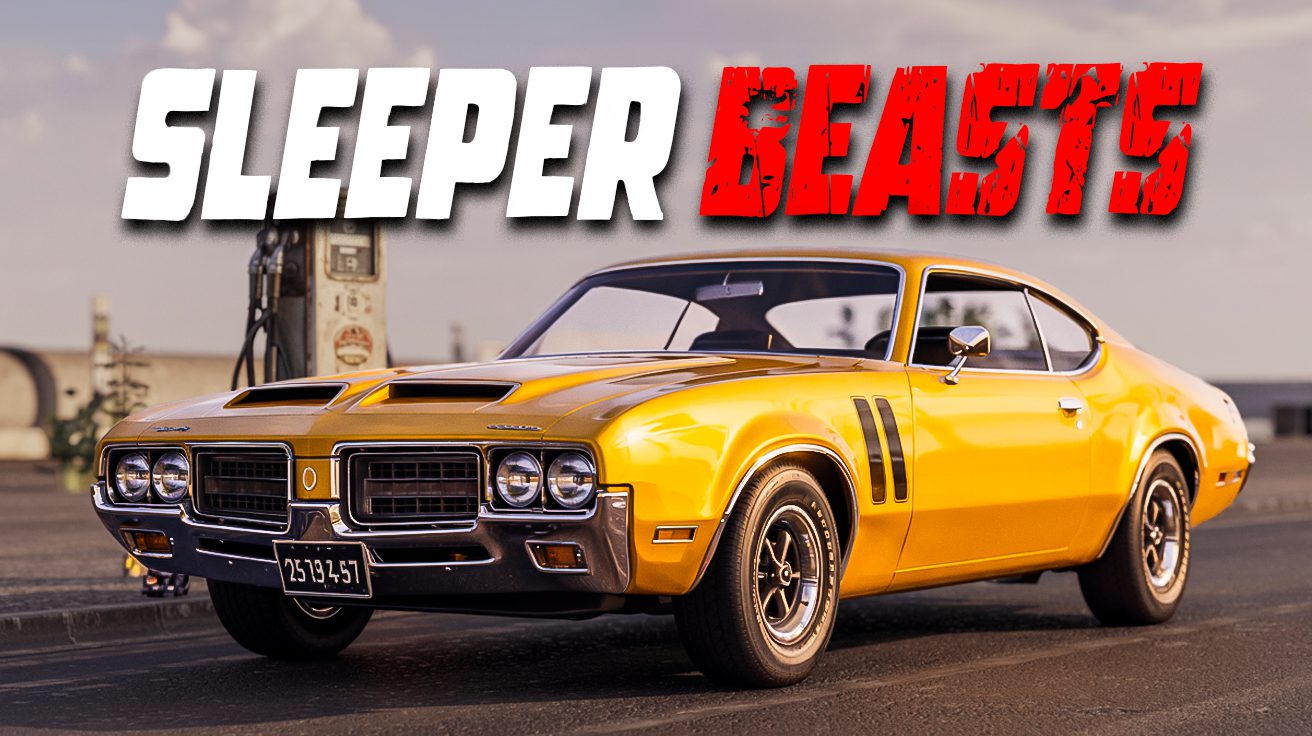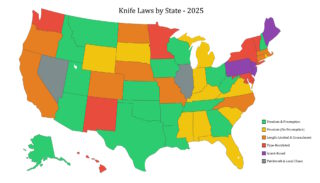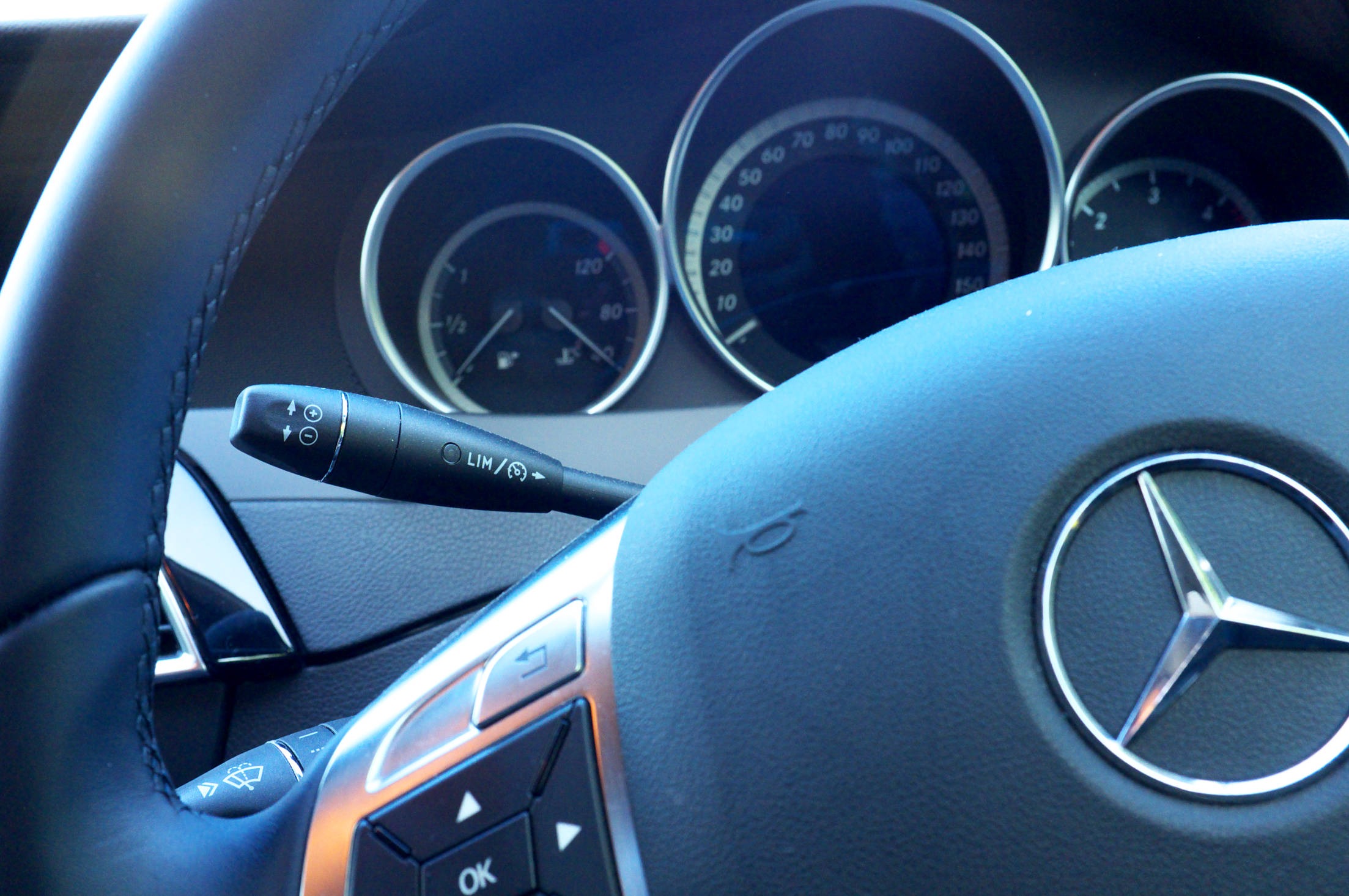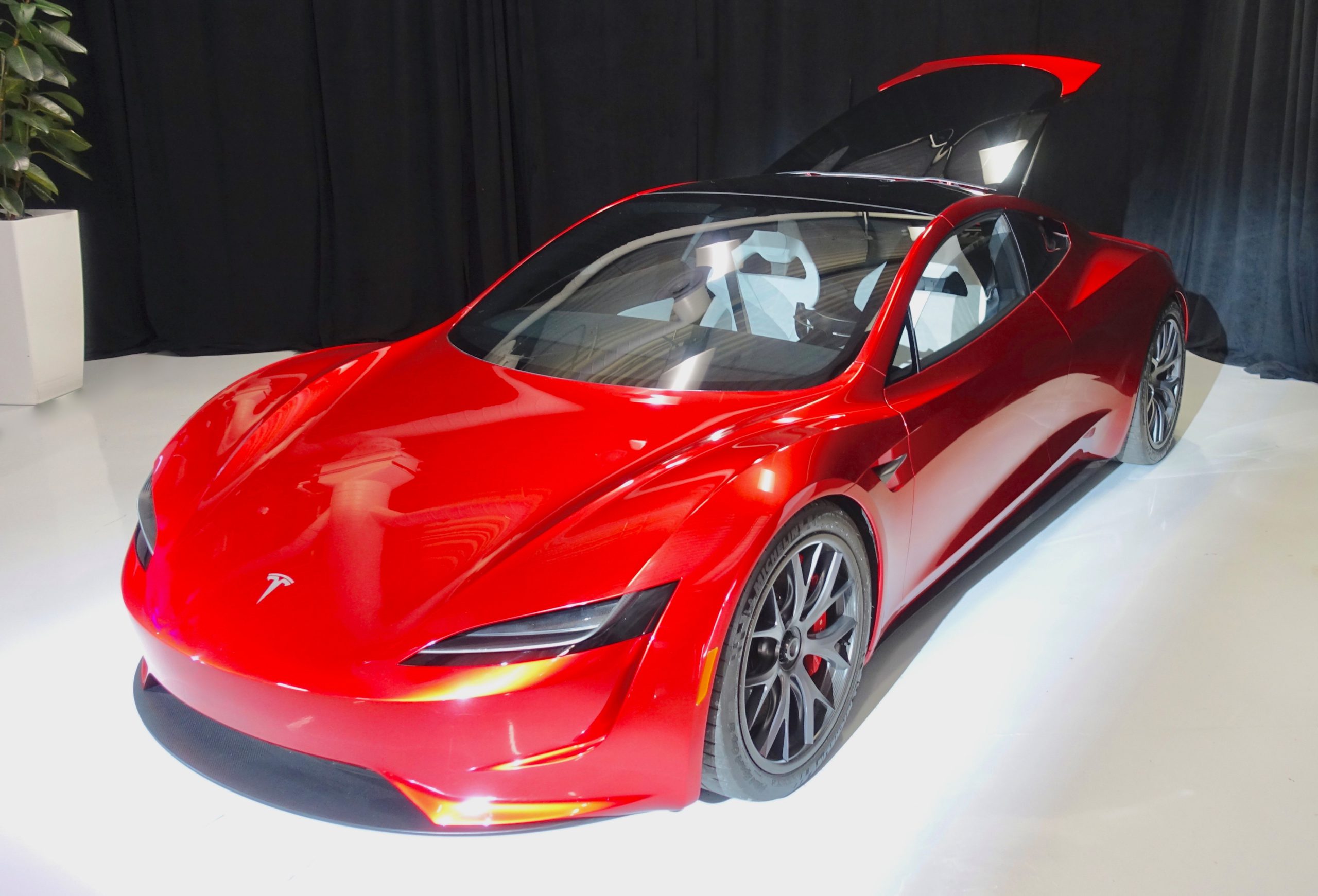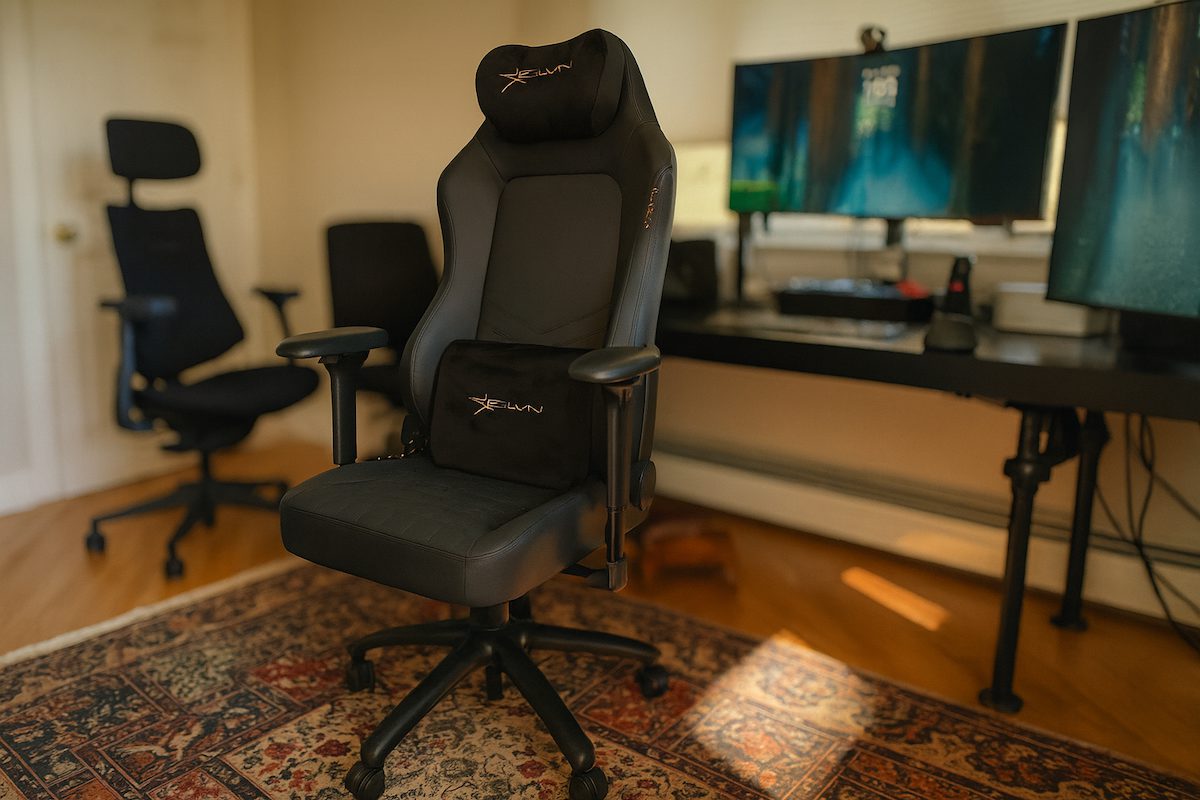The 1970s hit American muscle cars like a regulatory sledgehammer. While emissions cops and fuel crisis bean counters kneecapped the horsepower party, a handful of V8 rebels kept their carburetors clean and compression ratios respectable.
Meet some of these muscle machines that history shoved into the garage corner beneath dusty tarps. We referenced established muscle car magazines and websites, such as Hemmings, Muscle Car Review, and the Hot Rod Network, to prepare this list of cars. Each survived Detroit’s power purge through clever engineering or sheer corporate stubbornness, packing more punch than their sales numbers suggested.
15. 1971 Ford Torino Cobra 429 SCJ (Exterior)

Swooping into dealer showrooms with predatory intent, the Torino Cobra wore bodywork that looked ready to swallow smaller cars whole. With curves more aggressive than a bull seeing red, Ford produced this beast as one of 3,054 total Cobras that year, with the Super Cobra Jet being an elite subset. Each flaunted menacing Cobra badges and a functional hood scoop that fed cold air to the 429’s hungry lungs. While Mustangs hogged the spotlight, the Torino Cobra’s sleek-yet-aggressive profile aged like fine bourbon.
1971 Ford Torino Cobra 429 SCJ (Interior)

Pop open the door and this Ford’s cockpit means business. High-back bucket seats grab you similar to how the car grabs pavement, while a floor-mounted shifter orchestrates the 375-horsepower symphony lurking under that massive hood. The 429 Super Cobra Jet engine transforms this business-class cabin into a rocket sled, blasting through quarter miles in times that varied from test to test, with most Cobra Jet models hitting around 14.5 seconds at 102 mph. Ford’s engineers balanced comfort with speed remarkably well – the Cobra doesn’t punish your spine even while it punishes stoplight challengers.
14. 1970 AMC Rebel Machine (Exterior)

AMC crashed the muscle car party like the scrappy underdog in every sports movie. Their Rebel Machine arrived wearing the most patriotic paint job this side of Captain America’s shield – red, white, and blue splashed across the first 1,000 examples. Later solid-color versions kept the oversized hood scoop and bold graphics. The Machine’s stance telegraphed serious street cred among bigger-name competitors, with functional ram-air scoop, blackout grille, and discrete badging that meant business without the usual Detroit excess.
1970 AMC Rebel Machine (Interior)

Beneath that patriotic sheet metal, AMC delivered performance substance to match its flashy style. The 390 cubic inch V8 hurled 340 horsepower and steamroller-flattening 430 lb-ft of torque through a precise Hurst four-speed shifter. This mechanical marvel rocketed to 60 mph in just 6.8 seconds – quick enough to embarrass many big-block competitors from prestigious brands. Supportive bucket seats, wood-grain accents, and no-nonsense gauges created a cockpit for driving, not posing. The Machine delivered AMC’s automotive mic drop, proving underdogs could build world-class performance.
13. 1973 Pontiac Firebird Formula 455 SD (Exterior)

As the muscle car apocalypse loomed, Pontiac’s Formula 455 SD sliced through both air and expectations with sheet metal sculpted for speed. While its flashier Trans Am sibling hogged magazine covers with screaming chickens, the Formula went stealth mode with cleaner lines, functional twin scoops, and subtle badges that whispered rather than shouted. With only 43 Formula SD-455 units produced in 1973 (compared to 252 Trans Ams with the same engine), spotting one today happens about as often as finding an honest politician. The Formula proves that sometimes the deadliest creatures don’t need to announce their presence.
1973 Pontiac Firebird Formula 455 SD (Interior)

The command center of the Formula 455 SD wraps around its driver with purpose-built intensity. The officially rated 300 horsepower figure (some sources vary between 300-310 hp) ranks among history’s most laughable understatements – like calling a tornado “a bit breezy.” This engineering masterpiece delivered impressive acceleration in magazine tests of the era, though not quite matching some of the more optimistic claims circulating today. On February 7th, 1973, it performed an engineering miracle by passing California’s stringent emissions tests while preserving neck-snapping performance. The SD 455 represents the high-water mark of American muscle persevering against regulatory odds.
12. 1970 Buick GSX Stage 1 (Exterior)

Quite possibly the most terrifying sleeper in muscle car history, the GSX Stage 1 could devour Hemis while wearing the equivalent of a tailored suit. From a total of 678 GSX models produced, 400 featured the coveted Stage 1 package, each dressed in either retina-searing Saturn Yellow or Apollo White paint. While other GM divisions shouted about performance, Buick took a sophisticated approach with tasteful spoilers, blacked-out grille, and subtle fender flares that whispered rather than screamed its capabilities – proving GM could surprise even the most seasoned car fans. For some of the most eccentric creations, explore the weirdest GM muscle cars that flew under the radar.
1970 Buick GSX Stage 1 (Interior)

Opening the door reveals an interior balancing boardroom sophistication with dragstrip brutality. The 455 cubic inch V8 unleashed a then-conservative 360 horsepower but an earth-rotating 510 lb-ft of torque – enough twisting force to realign tectonic plates. This torque monster rocketed through quarter miles in 13.38 seconds at 105.5 mph and hit 60 mph in just 6.5 seconds. Comfortable bucket seats, floor-mounted shifter, and upscale trim created an environment as pleasant for cross-country cruising as for stoplight showdowns. This wasn’t just a muscle car – it was muscle with manners.
11. 1977 Pontiac Can-Am (Exterior)
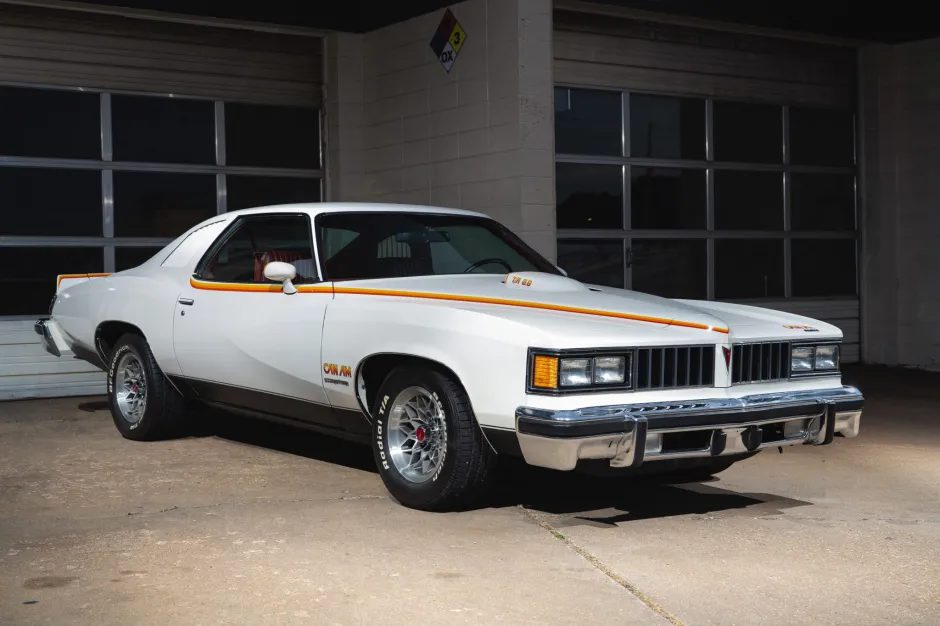
While government regulators were busy writing muscle cars’ obituaries, Pontiac’s rebellious engineers quietly developed the Can-Am. The LeMans body wore polar white paint, adorned with multi-colored stripes that would make Joseph’s technicolor dreamcoat jealous, topped with a functional shaker hood scoop and rear spoiler. With production limited to just 1,377 examples due to a broken spoiler mold (seriously!), the Can-Am borrowed Trans Am styling cues and applied them to the more elegant LeMans platform, creating a car ready for both NASCAR and Studio 54.
1977 Pontiac Can-Am (Interior)

Slipping behind the wheel reveals a driver’s environment more special than its LeMans origins suggested. The 400 cubic inch V8 might have been down to 180 horsepower (thank you, emissions regulations), but still pumped out approximately 305 lb-ft of torque – enough grunt to push the Can-Am to 60 mph in 10 seconds flat. In 1977, when most cars struggled to get out of their own way, this qualified as blistering. Pontiac specified a highway-friendly 2.41 rear axle ratio, creating a muscle car that could devour interstates without drinking fuel faster than a frat boy at homecoming.
10. 1970 Mercury Cyclone Spoiler 429 CJ (Exterior)

Straight from NASCAR’s playbook and onto public roads, Mercury’s Cyclone Spoiler wore bodywork so aerodynamically purposeful it makes modern sports cars look indecisive. The front end sliced through air with shark-like hunger, its semi-fastback profile culminating in a trunk-mounted wing that generated actual downforce. Finished in Competition Orange, Blue, or Yellow (subtle naming wasn’t Mercury’s strong suit), its NASCAR pedigree wasn’t just marketing fluff – this was essentially the street version of David Pearson’s race car, a wolf in slightly more upscale wolf’s clothing.
1970 Mercury Cyclone Spoiler 429 CJ (Interior)

A perfect balance between Mercury luxury and race-bred performance defines the Cyclone’s cabin. The 429 cubic inch Cobra Jet V8 kicked out 370 horsepower – enough to rocket this Mercury to 60 mph in 6.2 seconds. The quarter mile flashed by in 14.1 seconds at 100 mph, numbers that would embarrass many modern performance cars. Opting for the drag pack brought serious hardware upgrades, while the interior featured high-back bucket seats, full instrumentation, and a woodgrain dash. The Cyclone Spoiler 429 CJ remains Mercury’s forgotten hero, overshadowed despite offering superior highway stability.
9. 1971 Plymouth GTX 440+6 (Exterior)

The 1971 GTX rolled into dealerships as the end of the muscle era loomed, wearing Plymouth’s fuselage styling with an attitude that screamed defiance. While competitors meekly accepted their regulatory fate, the GTX flexed sheet metal with curves more provocative than an Instagram influencer’s vacation photos. The Air Grabber hood wasn’t just show – this vacuum-operated system popped open under acceleration to feed the triple-carb setup. Plymouth shortened the wheelbase, creating a more compact, muscular stance that enhanced both appearance and handling, representing the last uncompromised Mopar muscle before regulations ended the party.
1971 Plymouth GTX 440+6 (Interior)

Inside the GTX’s cockpit, Plymouth wrapped drivers in an environment that balanced comfort with purpose. The star was the 440 Six Pack (Mopar-speak for three two-barrel carburetors), which belted out 385 horsepower and enough torque to alter Earth’s rotation. This powerhouse launched the GTX to 60 mph in just 5.7 seconds and demolished quarter miles in 13.7 seconds at 102 mph. The dashboard angled toward the driver, displaying proper rally gauges, while the pistol-grip shifter might be the most satisfying manual transmission interface ever created – clicking through gears with mechanical precision modern shifters only dream about.
8. 1971 AMC Javelin AMX (Exterior)

Nothing divides opinion faster than the Javelin AMX’s bodywork – not even discussions about pineapple on pizza. Designer Dick Teague unleashed styling so bold and muscular it makes other pony cars look like they skipped leg day at the gym. Those bulging fender flares stretch outward with exaggerated confidence, like a bodybuilder striking a pose. AMC’s design team clearly ignored the memo about playing it safe, creating a menacing grille, deeply inset headlights, and power bulge hood. Some early models received weight-saving fiberglass hoods for both performance and collectibility.
1971 AMC Javelin AMX (Interior)

Beating beneath the sculptured hood resides AMC’s mighty 401 cubic inch V8 – the largest engine ever offered in a pony car until that point. This torque monster pumped out 330 horsepower, enough to propel the Javelin AMX to 60 mph in around 8 seconds and through the quarter mile in 16 seconds flat. The cabin offered something truly special for those wanting to make a statement – the Pierre Cardin Edition interior package with wild fabric patterns that perfectly captured the 1970s design ethos. Transmission choices ranged from three-speed automatic to four-speed manual, all directing power through a robust drivetrain.
7. 1964 Ford Galaxie 500 XL 429 (Exterior)

Elegant, flowing lines characterize this Ford giant, offering little hint of the performance potential lurking beneath. The exterior styling featured stacked headlights, a formal roofline, and subtle badging that gave little indication of the power hiding under that massive hood. Chrome trim and optional wire wheel covers added class to this full-size performance machine. Despite its considerable dimensions, the Galaxie managed to look athletic and purposeful, striking a perfect balance between luxury car presence and muscle car attitude. This was American luxury with a serious speed habit.
1964 Ford Galaxie 500 XL 429 (Interior)

Despite popular mythology, the 429 engine wasn’t available until 1969. The ’64 Galaxie offered choices ranging from the 289 V8 (195 hp) to the mighty 427 V8 delivering up to 425 horsepower. The 390 could reach 60 mph in about 9 seconds, while the 427 slashed that to under 7. The XL trim added sporty bucket seats and a console-mounted shifter, elevating the luxury feel. This big Ford combined NASCAR-worthy performance with highway cruiser comfort, creating the perfect machine for high-speed, cross-country adventures.
6. 1970 Oldsmobile Rallye 350 (Exterior)

Oldsmobile countered the 1970 muscle car saturation with a visual knockout punch that couldn’t be ignored. The Rallye 350 wore Sebring Yellow paint on EVERYTHING – body, bumpers, wheels, and frame – creating a visual presence that made other muscle cars look indecisive. Only 3,547 examples escaped the factory, making this a genuinely rare find today. If you’re curious about other obscure models from the decade, these forgotten 1970s cars might surprise you.
While big-blocks got the glory, Olds recognized that younger buyers needed affordable insurance rates, creating this distinctive package that stood out in a showroom like a neon sign in a library.eon sign in a library.
1970 Oldsmobile Rallye 350 (Interior)

From the driver’s seat, the Rallye 350 delivered legitimate performance from its 310 horsepower V8, hitting 60 mph in 7 seconds flat and clearing the quarter mile in 15.27 seconds. Both manual and automatic transmissions were offered, each directing power through a competent chassis that balanced handling with comfort. The interior featured supportive bucket seats, a comprehensive gauge package, and tasteful wood-grain accents. This was Oldsmobile’s brilliant solution to the insurance crisis – a smaller displacement muscle car that insurance companies wouldn’t penalize but still delivered enough thrust to satisfy stoplight warriors.
5. 1973 Ford Gran Torino Sport 429 (Exterior)

Ford’s ’73 Gran Torino Sport wore styling that perfectly straddled muscle car aggression and personal luxury coupe elegance. Its long hood, fastback roofline, and hidden headlamps created a distinctive silhouette that would later gain fame on television. The clean body lines flowed more gracefully than most mid-70s designs, with subtle performance cues rather than the screaming graphics of earlier muscle cars. This was Ford’s transition design – maintaining performance credibility while acknowledging that buyer preferences were shifting toward more sophisticated aesthetics.
1973 Ford Gran Torino Sport 429 (Interior)

Under the hood, the 429 cubic inch V8 unleashed 360 horsepower. Acceleration from 0 to 60 mph took 8 to 10 seconds. The top speed reached around 130 mph. The innovative vinyl seats allowed air to circulate, keeping occupants cool. The suspension soaked up bumps with ease. The braking system provided confidence. It’s a smooth, comfortable ride that balanced performance with luxury. Yet, this powerful and stylish car has often been overlooked in muscle car discussions. It deserves greater recognition as one of the last true performance options of the mid-1970s.
4. 1971 Dodge Super Bee 440+6 Pack (Exterior)

Moving from Coronet to Charger platform, the 1971 Super Bee wore the most intimidating front end ever bolted to a production car. Its twin-scoop hood, bold graphics, and cartoon bee mascot projected an attitude meaner than a junkyard dog with a toothache. The lightweight hood secured with racing pins wasn’t just for show – it reduced weight over the front wheels for better handling. Dodge designers created one of the most visually aggressive machines of the muscle era, a car that looked ready to pick a fight with anything on the road.
1971 Dodge Super Bee 440+6 Pack (Interior)

Matching its exterior aggression perfectly, the Super Bee’s cabin surrounds you with purpose-built intensity. Dodge stuffed a 440 cubic inch V8 with three two-barrel carburetors under the hood, producing 390 horsepower (officially rated) and enough torque to distort the Earth’s magnetic field. This monster rocketed to 60 mph in 5.9 seconds and demolished quarter miles in 14.2 seconds. Inside, driver-focused gauges, high-back bucket seats, and a pistol-grip shifter created a purposeful environment. The Super Bee represented Mopar’s final “no compromises” approach before emissions regulations and insurance penalties ended the muscle car golden age.
3. 1975 Chevrolet Laguna S3 400 (Exterior)

Chevrolet engineers refused to let performance die without a fight, crafting the Laguna S3 as their secret weapon against Detroit’s horsepower famine. With only 7,100 built, the sloped nose design looked more wind tunnel than showroom. Its distinctive front end with body-colored flexible bumper and Opera window louvers created a unique presence that separated it from lesser Chevelles. Designed to dominate NASCAR ovals, the Laguna S3 brought racing credibility to showrooms just as most competitors were hawking tape stripes and fake hood scoops as “performance upgrades.”
1975 Chevrolet Laguna S3 400 (Interior)

By mid-70s standards, the Laguna S3 delivered respectable performance worth celebrating. Its 400 cubic inch small-block pushed the car to 60 mph in 10.5 seconds and through the quarter mile in 17.8 seconds – not earth-shattering, but quicker than most 1975 offerings. The interior featured swiveling bucket seats and upscale trim that added a touch of luxury to this NASCAR-inspired package. While not a tire-smoking monster like earlier Chevelles, the Laguna S3 maintained performance credibility during the darkest days of the malaise era, balancing emissions compliance with driving enjoyment.
2. 1976 Dodge Aspen RT 360 (Exterior)

Compact muscle arrived in Dodge showrooms when the Aspen RT debuted, just as performance had nearly vanished from American roads. First-year sales topped 500,000 units across all trim levels, with the RT version adding stripes, spoilers, and special badging to telegraph its performance intentions. The smaller, more manageable size reflected changing market preferences as the era of 4,000-pound muscle machines ended. Despite its compact dimensions, the Aspen RT maintained an aggressive stance that honored Dodge’s performance heritage while acknowledging the new automotive reality of mid-70s America.
1976 Dodge Aspen RT 360 (Interior)

For the emissions-strangled mid-70s, the RT’s 360 cubic inch V8 offered surprisingly decent punch. Zero to sixty arrived in 9.1 seconds with a 16.8-second quarter mile – numbers that would embarrass a modern minivan but represented genuine performance in 1976. Rust issues, questionable ignition systems, and numerous recalls severely damaged the Aspen’s reputation despite its decent performance potential. The interior offered surprising comfort with supportive bucket seats and a full complement of gauges. The Aspen RT represents one of Chrysler’s last gasps of performance before the K-car revolution changed everything.
1. 1978 Dodge Magnum XE 400 (Exterior)

The 1978 Dodge Magnum XE marked the end of an era. It was intended for NASCAR racing with aerodynamic styling. The sleek front end featured hidden headlamps, and the overall profile offered better wind resistance than earlier Chrysler performance models. Richard Petty famously raced the Magnum in NASCAR, though with limited success. The production cars offered T-tops and other luxury features that appealed to buyers looking for style with moderate performance.
1978 Dodge Magnum XE 400 (Interior)

Chrysler’s last big-block gasp lurked under the Magnum’s hood – the 400 cubic inch V8 generating a modest 190 horsepower. Performance was acceptable rather than exceptional: 0-60 mph in 11.6 seconds and quarter miles in 18.6 seconds. The interior reflected the “brougham” era with padded surfaces, woodgrain accents, and comfort-oriented seats. Despite Richard Petty’s racing efforts, the Magnum struggled to find success on NASCAR tracks, with Petty eventually abandoning it for Ford. Today, the Magnum represents the final chapter of traditional Mopar muscle before the front-wheel drive revolution swept through Auburn Hills.


